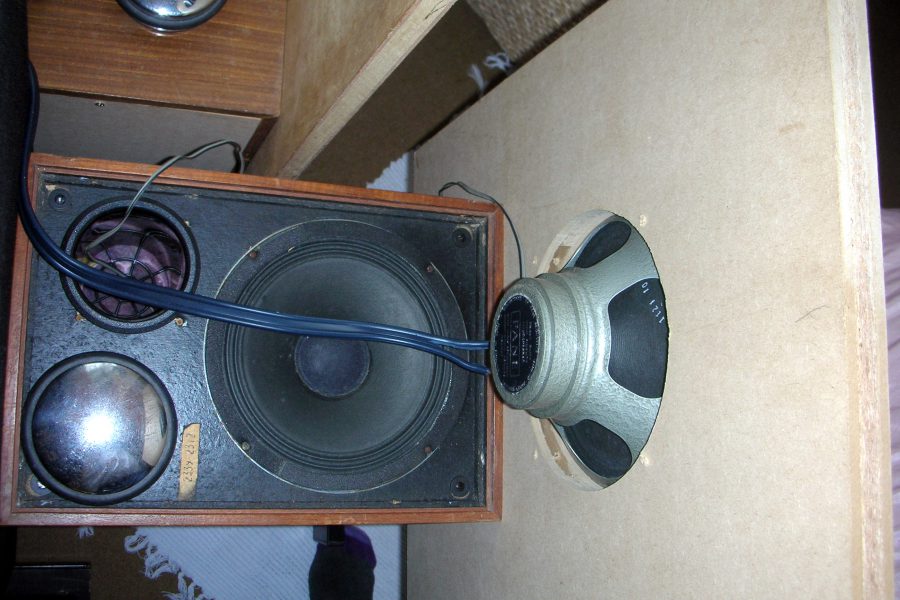I was once the proud owner of a pair of Lowther PM6A Acoustas, which I sold on the basis that I had acquired the ‘ultimate’ Horn Loudspeaker – The Klipsch Klipschorn. Although partially regretting the Lowthers departure I’ve been very happy with the Klipschorn since nothing comes close to their involvement.
But then I stumbled across a most unusual design at hifiworks.co.uk It was a pair of loudspeakers consisting of a single FRS driver on a 45 degrees baffle in a ‘coffin’ like box made of plywood sitting on a cradle acting as stands. They were ported on one side at the other end opposite to the driver, so I view them as Tall Quarter Wave Voight Pipes – but I may be wrong.
Anyway, they were a DIY job, and as they were matched with a Sugden A21 class A amplifier I presume the speakers to be of the same age – circa 1967. The driver is a yellowish paper unit as seen in the photo. I have speculated that the driver might be an 8” Goodmans unit or Wharfedale but such is the construction that taking it out would be a one way exercise as the drivers are bolted in, and I did not fancy changing the loudspeakers originality.
Listening to these speakers atop the Klipschorns was a revalation in terms of venue information, soundstaging that you walk into, and bass in meaningful quantity and quality. As before I use speakers atop the Klipschorns as speaker weights but also for exploring the nature of ‘beaming’ sound. Firstly there was a pair of Quad ELS 57s, then the Dahlquist DQ10’s, then the Wharfedale SFB3’s; but now the 8” Paper TQWVP’s – driver against the side wall and pointing at 45 degrees to the ceiling in what I’d describe as a reflector setup. They are amazing with a small 8W valve amp I have, running a Musical Fidelity FCD as a source.
Anyway I decided that they were keepers and perhaps should keep an eye on replacing the 8” drivers if and when they might fail, thinking that a pair of Lowther drivers might fit the bill.
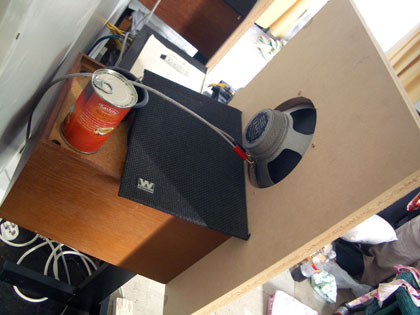
Then out of the blue I found myself at a Cornish Car Boot, and again stumbled across the remains of an electronic shop selling off bits and pieces including 3 Altai FRS 8” divers. I snatched them up for the princely sum of £5 total – bargain! If nothing else, they could act as stand-by units until something better came along.
The trouble is that as audiophiles in my case, I wanted to know what do the units sound like? What followed went basically like this: I had a pair of Wharfedale Denton 2s and Linton 2s which I couldn’t sell and began to think of how to use the bass/mid and treble units in a DIY OB project. Planning was along the lines of a multi diver OB similar to a poor mans Jamo R909. This left the cabinets of the Denton and Lintons out of job.
I tried my luck and placed the Altai in the Denton cabs. WOW! The 3” opening for the treble unit was turned into a port and out came music! Highly analytical, very bright at first but after burn in they began to mellow although my ears were ringing after a session suggesting very high SPLs. What was needed was more of a balance and so the bigger cab of the Lintons was used next. I was onto something and without almost any cost. Marvellous.
So now I had a number of matching Wharfedale drivers, which I decided to build an OB system with – easy. I drew my plans, 2 bass/mid drivers utilising the existing crossover to the treble units, but somehow I couldn’t commit to my design. I researched blogs, forums and the net in general including the Gradient concept speaker but eventually decided to combine OB and Box along the lines of the Tecton 4.5 Hybrids; except that I would use the Wharfedale 8″ combined with crossover and treble.
I reinforced a baffle from another cab I had with MDF to 1”, built a rig to cut 71/4” holes, and what I ended up with was an OB with 8” bass/mid and treble atop and the Denton cab fixed to the rear with the 8” bass/mid firing up to cancel bass reflection. It looked good but sounded dry and thin. I then tried two 8” Altai’s, and this sounded much better. But I needed a stereo pair.
I had also learnt an important lesson that one must employ quality drivers in any design: there is no quick fix or quality on the cheap! So back onto the web and again to hifiworks where I recognised an array from a cinema consisting of six FANE 15ohm 8” FRS with special magnets claiming Hi-Fidelity Reproduction.
I have started a new paragraph as it best describes the quatum leap of installing the FANEs in the hybrid design that I have named OB1 (pronounced O be Wan) – Think Star Wars. In reality it was my first open baffle+.
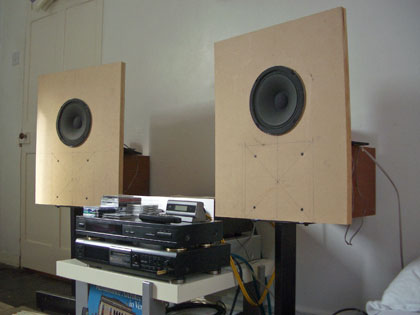
Part II
I mounted the OB1s on 19” steel speaker stands, and as I was in my Cornish Holiday Home my system consisted of a Denon TU260L Tuner, Sony MDS JE 500 MiniDisc used as a DAC into a Trio KA305 Transistor amplifier with QED Silver 25th Anniversary cables running to the OB1s. Using a PC Laptop as CD source I powered up the system listening to a Bose Test disc of differing musical genres.
Straight away the FANEs produced a good central image, bass weight, very good dynamic speed of crescendos with a detailed soundstage around the loudspeakers. The FANEs had tonality, fluidity and the bite/attack of the piano; the ‘pluck’ of an acoustic double bass with a varied tone that seemed to fall to the floor physically from a height when playing more modern recordings. Female vocals were focused, intonated and intense emotionally yet not sharp or harsh. At 7’ apart, toed in, they almost disappeared and moving to 9’ they did, producing a large sound in a 14’x10’ room.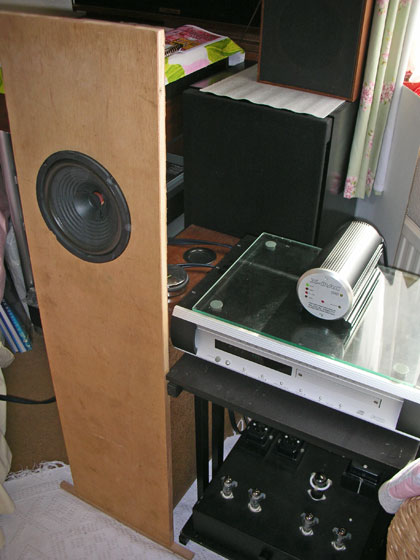
I wish to return to this sensation of the idea of around sound as an interesting term as the FANE in the baffle is 1” in front, vertically, of the FANE in the horizontal Denton ported cab. This I believe explains the natural impression of a physical depth or volume to instruments particularly from double bass and bass clarinet as heard on a live recording from BBC Radio3. Piano is also ‘weighty’; there is no punch as in the Yamaha NS1000M but a surge of musical energy, which is as wonderful as it is sometimes frightening.
Considering the mid range components utilised without mains conditioning this performance of the OB1s found me listening in absolute terms, critically, being more than satisfied and feeling more than a little content at producing a high end loudspeaker for next to nothing!
Part III
Writing about development of ideas is always a compromise between how things actually happen and how to clearly communicate sequential steps in achieving an objective. Whilst big steps were being made at realising the creation of a complex OB solution through experimentation with differing full range drivers, sketches and drawings, looking to the past (JBL Paradigm) and of course the works of others on the net, I came across the thoughts on OB Design by Steve Deckert. His writings on the same issue in a series of papers from 2007 to 2011 entitled “The ZEN Open Baffle Speaker Project” are some of the most engaging writing on building and listening I have read for a long time, probably since reading Briggs (Wharfedale). With the publication of the latest paper (I-V) and the release of a finished product, the ZOB, and plans to make your own, I felt ready to create a design based upon both the OB1 but with a higher, slimmer baffle.
Hence the OB1 ‘ZEN’ KENOBi was born. The KEN worked in the name as I said in Star Wars terms but also as a tribute to Ken Kessler whose efforts to maintain an avenue of discussion on vintage hi-fi has been a constant source of inspiration and debate about sound and the reproduction of music across all price ranges since I can remember.
The construction utilising the OB from the OB1, using the front baffle in the side of the rear cabs, spare block board and FANE drivers, was based roughly on the dimensions used in the ZOB model with the view that it would be fun, rewarding, and if all else failed then I could buy or construct a pair of ZOB’s from the licensed plans.
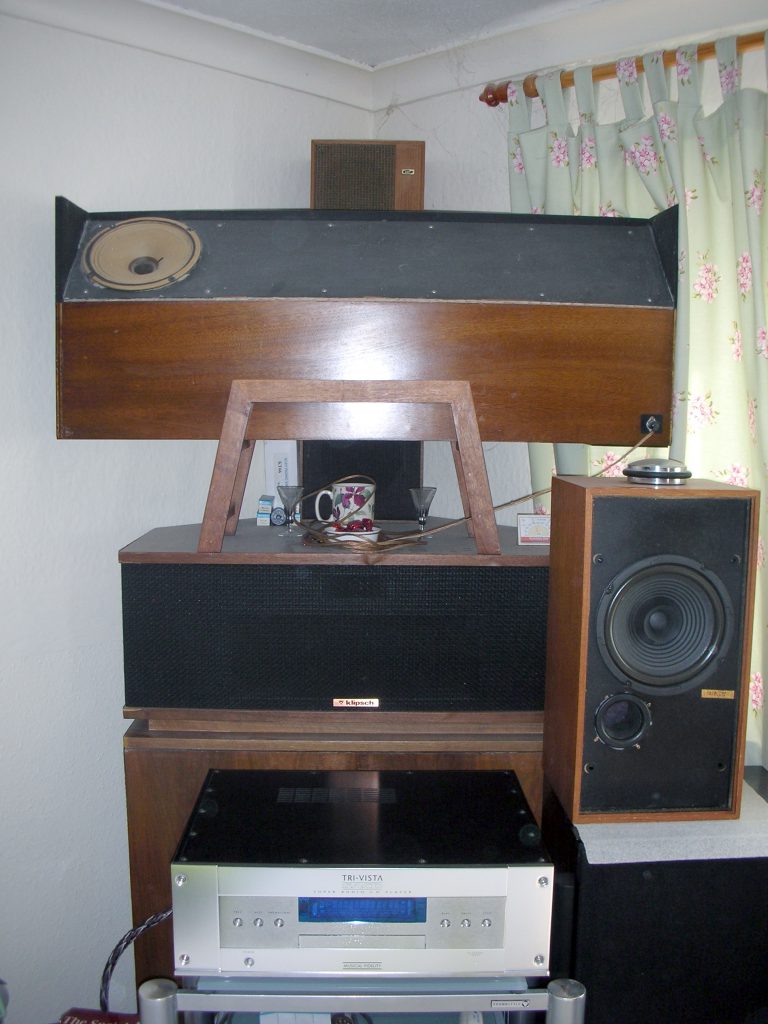
Part IV
The OB1 ‘ZEN’ KENOBi is an amalgam of two similar speaker concepts; the open baffle and the ported box, using two matching FANE 15 ohm FRS drivers in the OB1; and the KENOBi utilising the same drivers in a taller, slimmer OB and a deeper, slimmer box, or as in the initial subjective listening tests, an ‘un-box’ resonator. Combining the two is an act of planned enlightenment giving us the ‘ZEN’ hence: OB1 ‘ZEN’ KENOBi!
So far this article has dealt with the OB1 and the construction of the KENOBi, the dimensions of which are: Baffle: 48”H x 12.5”W x .75”D // ‘Un-Box’ Cabinet: 24”H x 20”W x 8.25”D
Basically, the ‘un-box’ was a spare set of cabs. I had left over from a purchase of bits and pieces from an old radio ‘ham’. They originally housed a 12” full range paper driver of unknown origin, which was to come in handy later! The clever bit (planned enlightenment) is that the baffle of the OB1 is the same dimensions; apart from the thickness, as the ‘lossy’ ‘un-box’ panels! So the two sides or baffles are interchangeable and allow a measured response on the path of experimentation, asking questions such as, is it better or worse with any changes or improvements being reversible.
Hole cutting is a serious business and practice makes perfect. The OB1 cut was good but slightly cambered as it exits the rear of the baffle. A perfectly ‘square’ cut would I have since discovered create a colouration. So a lucky accident on the OB1’s! The nature of the block board baffle on the KENOBi’s allowed a perfect circle to be cut, square and clean. The temporary Altai 8” FRS fitting perfectly in the baffle and secured with 4 screws. Initially listening was positive with a greater sense of bass than I could have hoped for, however, there was some ‘ringing’ which could become fatiguing. Whether this was an effect of colouration or more probably due to the construction of the driver with its pressed steel basket, I don’t know? The use of felt was considered to line the cut, and as one of the cabs. original 12” drivers was broken I decided, in line with the ethos of the whole project, to salvage a _” band of felt used on the rim of the old driver and it fitted perfectly by absolute chance, without glue, like a dream!
Immediately the ‘ringing’ had gone and a greater balance, i.e. more bass was evident. Further improvements and preparation for the next ‘ZEN’ phase were the addition of small rubber feet to angle the whole structure by about an inch, to allow the KENOBi, as one unit, to tilt backwards slightly. This has been improved by the addition of a stabiliser strip of MDF connecting the baffle to the floor and harder feet on the back/base of the cab. Finally, in preparation for the OB1 baffle, a 3” port was cut to vent the ‘Un-Box’.
Listening tests are commencing, but it sounds great; especially on well-recorded piano, as on Hugh Laurie’s (HOUSE) new debut album, ‘Let them talk’.
Conclusions
Strange how things work out; or rather, don’t!
It was with great reluctance that I disassembled the very successful OB1’s to create the ‘ultimate’ OB1 ‘ZEN’ KENOBi’s. I was expecting great things as the KENOBi ‘s had been successful in their own right with the ALTAI 8” FRS.
What or where did it start to go wrong?
The OB1’s ‘active’ baffle fitted neatly into the side of the KENOBi’s ‘Unbox’ , with the FANE drivers orientated in the same ‘vertical’ plane. However, the FANE 8” that had been firing upwards in the OB1’s was now orientated in a vertical rather than a horizontal plane, and this on the right hand speaker began the beginning of the end for the ‘ZEN’ of combining the two designs.
It started as a mild modulation on some discs, which I initially thought was due to the over analytical nature of the FANE’s but a recent recording by Joni Mitchell, ‘Taming the Tiger’ caught out one of the units by creating a ‘papery buzz’ – the curse of vintage drivers – consistency!
The OB1 ‘ZEN’ Kenobi’s had been merely ‘fine’ up to this point but it now only strengthened my resolve to seriously re-assess what had been achieved by this meld of ideas and why I was having doubts.
The OB1’s work with the existing FANE drivers in their respective orientations and so they shall remain. As to the OB1 ‘ZEN’ KENOBi’s this I am afraid to say is a step too far; the bass for example is deeper but more coloured and I am reminded of the experiments behind the creation of the Decaware ZOB, and its unique solution. I may try replacement FANE’s just to make sure but there may be no point in forcing a design issue. The KENOBi worked best as a single driver design with a resonating ‘unbox’; therefore it shall remain so but with a pair of STENTORIAN 812’s which will be more than interesting, as these speakers will form the main speakers of a new system in my new flat!
So to conclude; the OB1’s are outstanding on all types of music and the drivers work in the given orientations. The KENOBi’s works best as a single FRS design. Instead of creating a ‘fusion’ speaker out of two concepts, I must accept that I have created a ‘range’ of 2 fine speakers.
Am I disappointed? No!
Both designs work excellently but not together! Or rather, I have heard Joni ‘speak’ to me in a way that no other speaker has communicated to me emotionally before, through the OB1’s; and this is how this audio adventure of many years now ends with the sale of my ‘beloved’ Klipschorns, my vintage reference for so long. Sadness, perhaps, but with a new found sense of discovery of the fact that 8” FRS can really deliver the music through ‘radical’ enclosure (or lack of one) design!
So; ‘Vivre la difference’!
May the force be with you to now IMAGINE NEW TIMES…
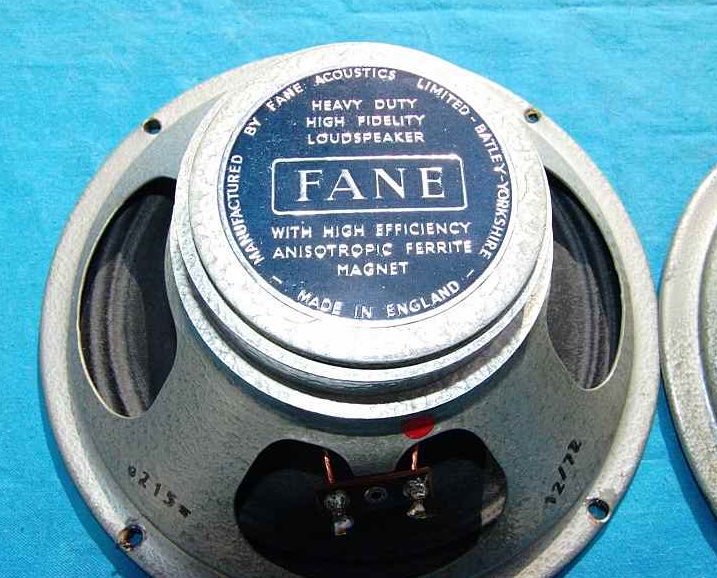
Postscript
Audiophiles suffer from many complex anxieties; one of which is the intolerance of component failure!
Such an affliction beset me over the apparent of a FANE unit on the OB1‘ZEN’KENOBi.
A Joni Mitchell track had a sustained bass note that, with hindsight, had a terminal wire contacting the paper diaphragm thus creating a buzz.
With rage, and not a little guilt, (having thrashed the OB1… on some Space Rock!), I through a ‘wobbly’ and denounced the whole project as a miserable failure!
Thus, in the cold light of day, not only could I see the faults cause, but I have come to re-assess the ‘ZEN’ philosophy of combining two designs.
Aesthetically the OB1‘ZEN’KENOBi is a classic along the lines of the Monolith in Stanley Kubrick’s film 2001, although not a golden rectangle.
Sonically, with the OB1’s still incised upon my mind, Joni has, and always will, speak to me of love and loss, and the unseen rewards in realising that we have to live all of life; happy, sad, and if we are very fortunate, love will be regained.
As you said (Kari) once before, one day the tunes will flow again…
Well listening again to Brian Eno on the OB1’ZEN’KENOBi’s perhaps they just have…

Vaughan’s OB1 – a quick take (Kari Nevalainen)
While Vaughan Warren is continuing his speaker project “OB1 Zen Kenobi”(Part IV is coming soon), I had a chance to visit his place in barren and beautiful Cornwall …
… and see & hear his OB1 system. As you can read from Vaughan’s description, the OB1 is a combination of OB and Box along the lines of the Tecton 4.5 Hybrids. Instead of the original Wharfedale 8” drivers, Vaughan now has Fane’s 15ohm 8” FRS with special magnets claiming Hi-Fidelity Reproduction.
The baffle itself has a sandwitch construction, and on top and below the drivers there’s an empty hole functioning as some kind of Hemholtz resonator.
The OB is much wider than the Box behind. The driver in the Box (hidden by the grill) shoots upwards just as the port. The can next to the port is an audiophile grade stabilizer.
At the heart of the system, one finds a Trio KA305 Transistor amplifier from the 70s/80s. The amp is running the OB1s with QED Silver 25th Anniversary cables. In terms of the 15 ohm speaker load this amp may more suitable for the job than its modern counterparts.
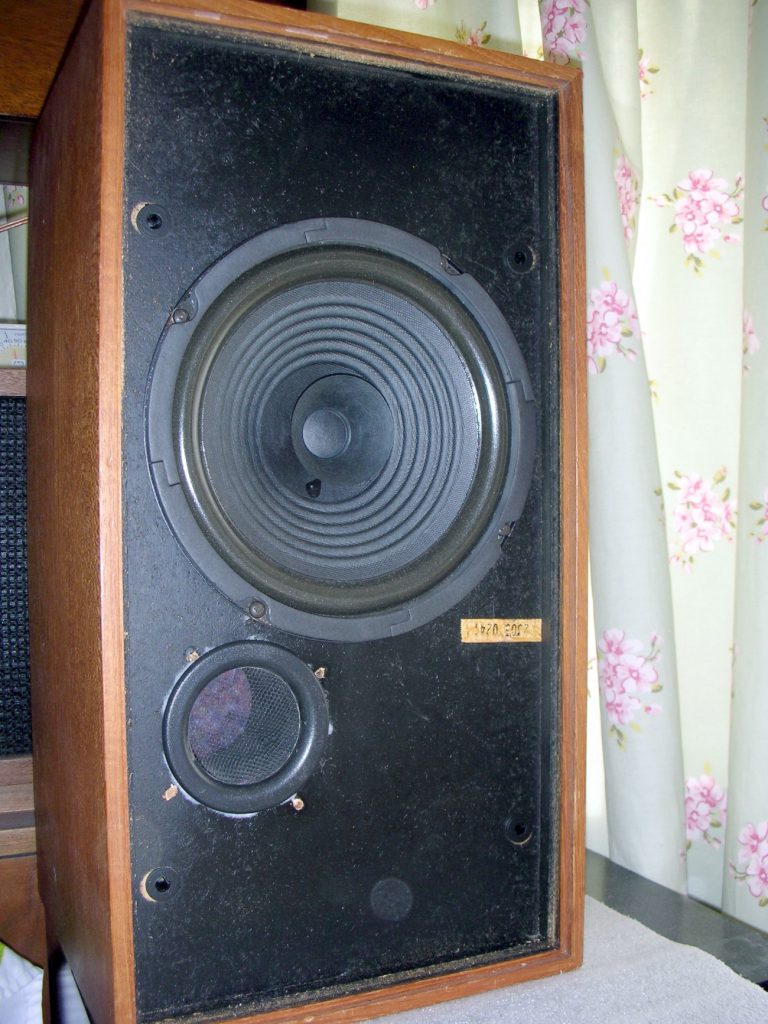
The analogue tuner is Denon TU260L supporting a mini-DAB. Sony MDS JE 500 MiniDisc is used as a DAC with a PC Laptop as the CD source. This compact system has much sense: each component has its justified role in the team, and no component is too much above or below its fellow component. Plus the system made good work in running Vaughan’s OB1 system in a fairly small room, the speakers still 40-50cm from the rear wall. As Vaughan puts it: in this system various disparate components are combined to transform their co-existance beyond the mere sum of their parts.
The sound? The sound was great! Lack of upper bass/low mid coloration was obvious, and made the sound an audiophile type in a good sense of the word. Even deeper bass notes were reproduced but the balance was in no way bassy, on the contrary. The Fanes aren’t particularly directional but the dipole radiation helped the system to focus the sound toward the listener. The stereo image was stable if listened from between the speakers. Vocal music came out nicely with a good amount of feeling in it. The system did good work with both classic and non-classic music. In fact, almost any piece of music that we listened had a positive aura around it. Brian Eno’s new album would probably be a fascinating experience irrespectively of which system was used, but through Vaughan’s OB1 system it sounded quite magical. Emotional experience of the music was well communicated.


